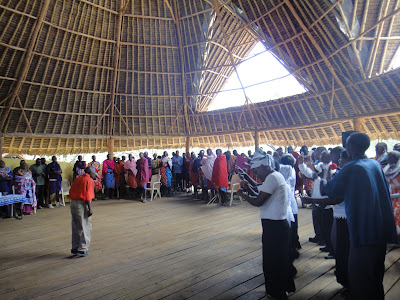Lale’enok Resource Center Impressions
By Anna Sakellariadis

Her black graduation robes, accented with a pile of traditional beaded necklaces, blended in among the colorful throng of Maasai women that came to greet Agnes Kamanga as she stepped from her car to the grounds of the Lale’enok Resource Center. The previous day, Agnes had graduated from the Catholic University of Eastern Africa. On this day, she returned to her home in Olkiramatian Group Ranch to celebrate with four hundred members of the community.


Many came early to the resource center to help with the preparations. The women gathered in one corner, cooking chapatis, rice, and stew. Meanwhile, the men roasted a cow a little ways off from the buildings, out of the sight of women so that young warriors would be able to eat it. A church choir set up their instruments and began playing their music, which swelled throughout the whole site. Upon Agnes’s arrival around mid-day, the official celebration began.
Everyone gathered under the shade of the main building for songs, speeches, and even some cake, courtesy of Mama Jo. The gathering, which had been organized by Agnes’s husband, John, the group ranch chairman and head of the South Rift Association of Landowners, was an opportunity for the community to share in her achievement. Singers from Kajiado came specially to sing about the importance of education and environment. When it was Agnes’s turn to speak, she too stressed the importance of education for everyone.


The utterance of such messages under the thatched roof of the main building at Lale’enok reverberated against the efforts of the women’s group that manages the site. The group’s bursary fund, supported by the resource center’s revenues, is already sending some of the community’s neediest children to school.
And so, even when the official celebration had finished, and even after the subsequent feasting and socializing was over, still the lingering impressions of the day remain: a local woman has proudly earned a higher education degree, and schoolchildren in Olkiramatian are gaining in opportunities through the work of the center and the women that run it.


Posted By
Rahab Wandia

